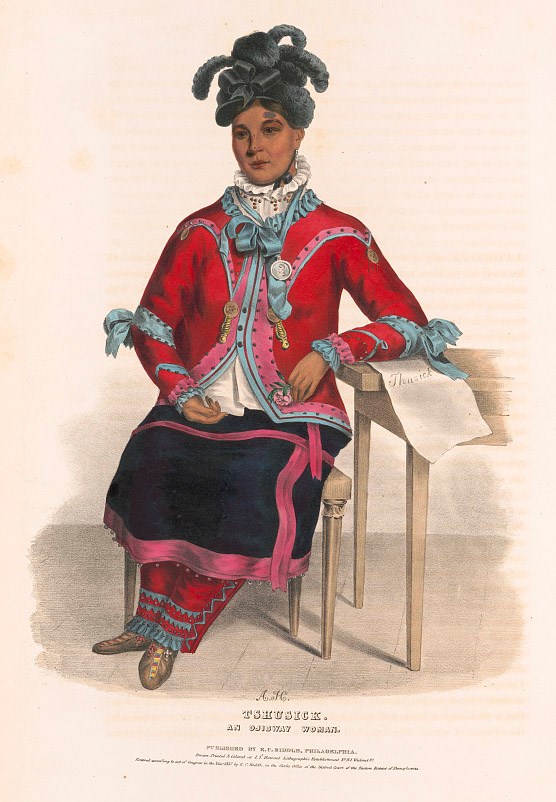Part of a series of articles titled Selections from Historic Contact: Early Relations Between Indian People and Colonists in Northeastern North America, 1524-1783.
Article
Understanding Northeastern Contact Part I

Collections of the Library of Congress. https://www.loc.gov/item/95503208/
Selections from the National Historic Landmark Theme Study
By: Robert S. Grumet, National Park Service, 1992
Understanding Northeastern Contact Part I
The national significance of the story of this encounter is well known and widely appreciated. Scholars sifting through masses of written, architectural, ethnographic, archaeological, and other evidence have studied nearly every aspect of contact. Results of recent research have been particularly productive. Despite these efforts, the overall record of contact in the region remains tantalizingly incomplete. Most physical evidence consists of scattered and often enigmatic archaeological or written materials. Much oral tradition remains uncollected or unstudied. Much of the record of contact has not survived intact to the present day. What has survived often is inadequately surveyed or incompletely analyzed.
These problems are not unique to contact studies. Researchers investigating the past always face formidable obstacles. Archaeologists dedicated to finding and interpreting physical evidence joining events to their locales and dates of occurrence, for example, continually labor to extract additional information from already known sites while working to find and protect new resources. Ethnohistorians trying to deal with incomplete or inconsistent bodies of documentation work to overcome the limitations of time, space, and interpretive viewpoint. To complicate matters further, investigators working in one field often refrain from crossing disciplinary lines. Even when they do, few agree on findings of fact or interpretation.
People trying to understand relations between natives and newcomers in the Northeast face particularly vexing challenges. Investigators working to bridge cultural and chronological gaps separating out time from the colonial past rarely agree on matters of chronology, geography, or interpretation. Most are keenly aware that the volatile nature of contact events led conditions to change in considerable and often unexpected ways. As mentioned earlier, scholars limited by the fragmentary nature of surviving resources and inspired by differing theoretical, cultural, and personal viewpoints have not yet been able to agree on any single interpretative or organizational scheme. Many investigators, for example, accept the proposition that the end of the American War for Independence marks the close of the earliest phases of historic contact in most parts of the Northeast. Few, by contrast, agree on when or where contact began. Some writers believe that contact began with ancient arrivals of Celts, Iberians, Africans, or other outlanders to American shores. Others trace contact to the time of the first Norse voyages nearly 1,000 years ago. Although these and other views have many adherents, most people presently think that the modern historic contact period began when Spanish, Portuguese, Basque, French, and English sailors began traveling to the Northeastern coast during the 1490s.
Last updated: May 21, 2019
